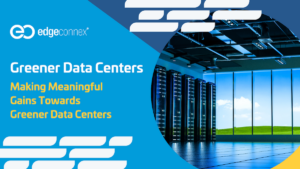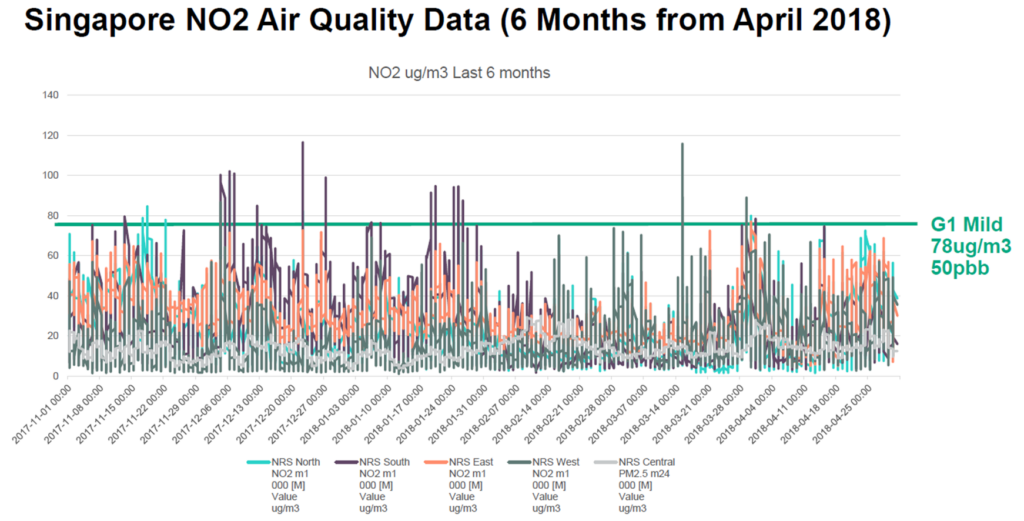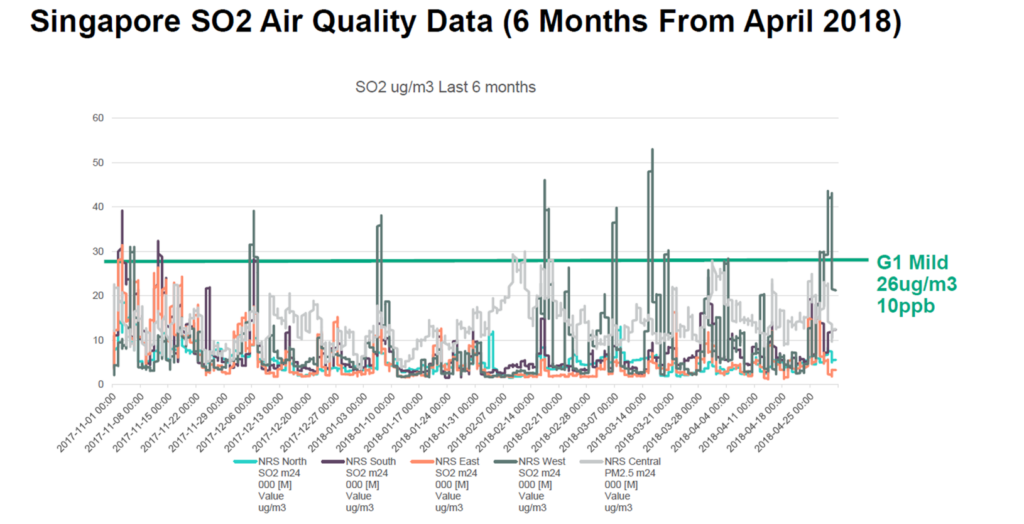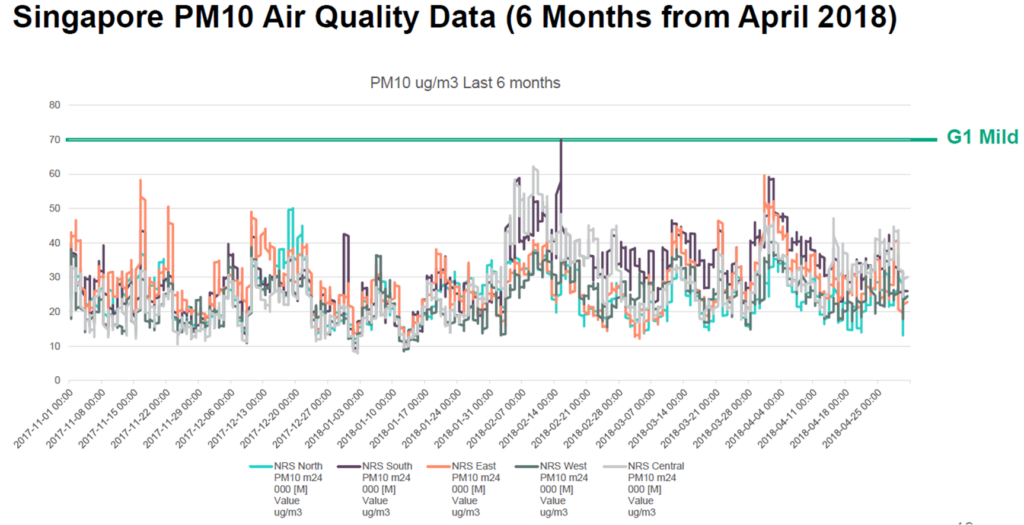Singapore’s three-year moratorium on new data centers recently ended and there is now an opportunity for the city-state to lead the way in reimagining what a green data center could look like.

Data centers have had a bad reputation as energy guzzlers – but that doesn’t tell the whole story. In 2009, one petaflop of compute required 24MW and 2000sqm of space. In 2020 the equivalent could be performed with 200kW and eight racks. In the last 15 years, server efficiency has improved 17-fold. Concurrently, in Singapore, infrastructure supporting IT has improved from an average PUE 2.1 to the current PUE 1.25. In fact, the hyperscalers or single-user data centers have reported PUEs of 1.13 to 1.17 in Singapore.
Data centers are a vital component of the global economy and the backbone of the highly digitalised world we live in. The internet, and the cloud which stores all our data, emails, photos, and videos rely on data centers to exist, requiring a huge amount of energy to support all the data traffic. However, rapid growth in data traffic need not necessarily result in an increase in energy utilization, thanks to efforts to introduce greater energy efficiency within the industry and the introduction of sustainable data centers.
In fact, efficiencies introduced into servers, power supplies, cooling, and networking have managed to offset higher processing rates, storage and traffic. Between 2010 and 2018, data center capacity increased by 600%, internet traffic grew by orders of magnitude, and storage capacity increased by 25 times. But data center energy use only grew by 6% over the same period, pointing to the value of ensuring that more data centers embarked on a sustainable path.
What is a Green Data center?
A sustainable data center or green data center is a facility that uses energy-efficient tech to minimize environmental impact, all while working at full capacity to house IT infrastructure and servers. They are designed to be as efficient as possible in terms of fittings, equipment, location, and infrastructure.
While the costs up front can seem like a lot, the long-term ROI is large. Green facilities can save money, offer employees a more healthy and comfortable work environment, make your organization stand out, and enhance relations with local communities.
Some common strategies used in green data centers:
- Minimize Building Footprint
- Low-Emission Building Materials
- Sustainable Landscaping
- E-Waste Recycling
- Backup Generators
- Alternative Energy
- Evaporative Cooling
- Electric Vehicles
- & More
Pushing the Boundaries for Sustainable Data centers
With the amount of data the world generates and consumes, growing rapidly each year, data centre providers need to continually make efforts to minimize our carbon footprint.
Concerns about the environmental impact of data centers have prompted authorities to put more focus on the construction of greener data centers and prioritizing energy-efficient data centers. Singapore, having lifted its moratorium recently, has introduced stringent standards on data center efficiency. Likewise, hyperscalers are also constantly looking to minimize their carbon footprint, with Google setting a goal to use clean energy to fully power their data centers by 2030. Microsoft is also looking at becoming a carbon-negative, water positive, zero-waste company by 2030.
The industry is striving to push boundaries in terms of energy and water usage, as well as IT loads.
But the challenge in making green data centers varies depending on regions and access to resources. In Asia for instance, it is easier to keep data centers cool in the temperate climates of Korea and Japan than it is in tropical Singapore. Approximately 37% of the total energy consumed by data centers in the city-state is used to cool IT equipment. Cooling architecture/topology then plays a role in determining how to get significant improvements in energy efficiency. Heat rejection, water or air, is feasible in Singapore, but it would be less ideal in a number of Asian countries including Indonesia and India where water stress will be a medium to long term issue.
Singapore is a great place to start when analyzing how data centers can innovate on the path toward sustainability. I’ve always been a proponent of water over air, but this could be the time to look at alternative means. It could mean the use of air economisers or direct air to cool data centers.
In 2018 I did a presentation on Cooling Architecture for Low PUE in Tropical Climates (refer to the figures below for air quality in Singapore then). The quality of air in Singapore was such that direct air cooling could be used. Could this be a time to relook at such an architecture again?
There are several factors to consider when looking at air cooling, such as the ability to control the temperature, humidity, dust, as well as gaseous contaminants such as sulphur-bearing gases to reduce copper creep or corrosion of silver metallisation in miniature surface-mounted components. If you refer to the charts below, the air quality in Singapore falls within the range of acceptable standards. Eg. (ANSI G1 Gaseous Airborne Contaminants).

Data Source: National Environment Agency (NEA), Singapore / Department of Statistics, Singapore
Despite its challenging climate, Singapore is a good example where boundaries can be pushed to ensure more efficient use of energy in green data centers. Authorities in Singapore have mandated that new data centers built must fulfill a PUE of 1.3 or less.
IT & Software Green Data center Sustainability Roadmap
While much of the effort to enhance efficiency is centered around facility systems and improving the efficiency of powering and cooling data centers, there is plenty of scope to improve the efficiency of IT devices and software as well.
There is a complex interplay at work between IT systems and facility systems that determine the energy performance of data centers and having a silo approach between the two often results in over-provisioning.
In terms of IT components, servers play a key role in determining the energy efficiency of data centers. Currently, the most significant issue affecting server energy performance is the power used at zero processor utilization. While there are techniques to invoke a sleep state for processors that saves energy, the latency involved when waking from a sleep mode at a time of high demand is a challenge that needs to be overcome.
Further, as we continue to innovate, facilities, IT components, and software will steadily improve in energy efficiency and performance.
As we have seen, trying to improve energy efficiency of legacy data centers can be challenging due to the way these facilities were originally designed. The big challenge then is to future-proof current designs to allow flexibility to integrate new technologies that would continually upgrade the efficiency of the data centers and ultimately create successful green data centers.
For the sake of our society and planet, it is a challenge that all of us need to live up to.


